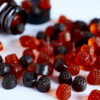With a variety of food allergies affecting the lives and health of children around the world, the opportunity to overcome food allergies is important to many children and their families. Overcoming a food allergy, especially a severe allergy, can improve the quality of daily life for many young children and teenagers.
One method of overcoming food allergies for children is oral immunotherapy (OIT), which is more common in preschool-age children–children under the age of six. In oral immunotherapy, a patient will ingest a gradually increased dose of an allergen in a clinic and work up to a maintenance dose, which they can taken at home for at least a year. Many OIT treatments show promising results, with the child having a new tolerance to that allergen they didn’t have before treatment. OIT does require frequent clinic visits and close monitoring by an allergist, or a doctor who specializes in treating allergies and other conditions related to immune system function.
However, for older children as well as children with more severe allergic reactions, OIT may be too risky. The “buildup phase” of OIT in particular, where the allergen dose is gradually increased, poses a risk, especially for older children and teenagers trying to overcome a food allergy. Another type of food allergy treatment, sublingual immunotherapy (SLIT), is a safer option in these cases. SLIT treatment involves placing tiny doses of an allergen under the patient’s tongue. A recent study done by scientists at the University of British Columbia found that using SLIT, especially in the initial phase of treatment, is a safe way of avoiding the risk of the “buildup phase” of OIT. SLIT has a longer timeline than OIT, but was still shown in the study to be an effective path for patients. SLIT also only requires some virtual supervision and can be done at home, which makes it a more feasible option for patients, especially when allergist appointments are in low supply. This study was unique in that it described the effects of the SLIT therapy on multiple types of food allergies and also included adolescent patients, or patients over the age of 11.
The study presents hopeful findings, particularly for patients who suffer from more extreme food allergies without options to overcome these symptoms. Having evidence to support SLIT as a safer alternative treatment for older children and children with more severe allergies will hopefully pave the way for increased opportunities for children and adolescents to overcome extreme food allergies.
Featured Image: New Africa










